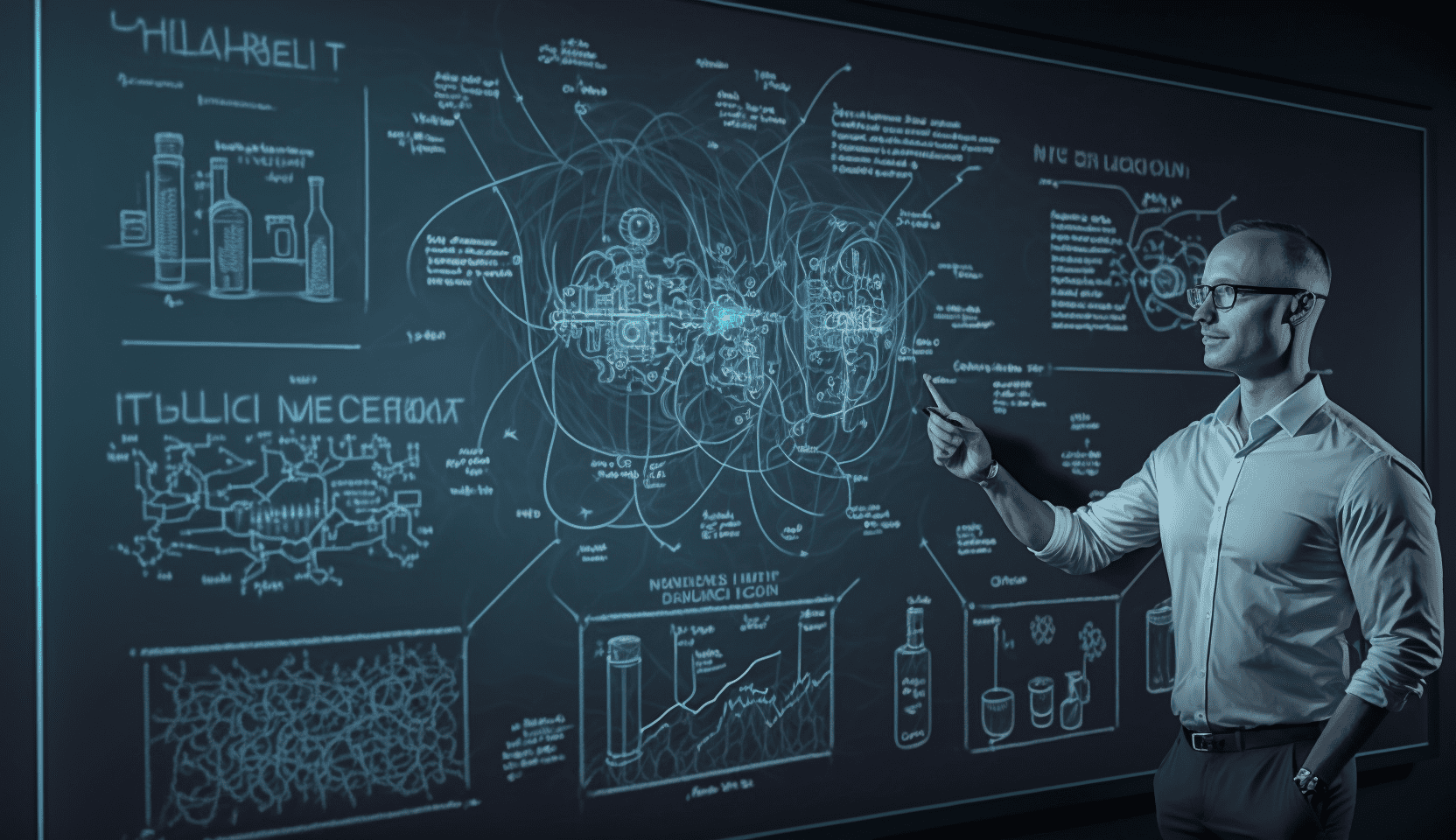
In 2018, from the mission-driven top sectors and innovation policy, the Ministry of Economic Affairs identified 8 key technology categories that could have a major impact on our society in the future. But this basic list of key technologies has been updated because technology is developing at lightning speed and society will also look different 5 years from now. To this end, the Ministry of Economic Affairs commissioned NWO and TNO, who worked with 60 experts from the field to complete this task. The result: a recalibrated basic list of 44 key technologies, summarized in 8 categories, presented on April 13, 2023. What can these mean for the high-tech and manufacturing industry, and what impact can we make with them? Bert-Jan Woertman, director of Mikrocentrum, explains.
Solutions to major challenges
Key technologies are important in solving major challenges facing companies today, such as climate change, changing consumer preferences, and increasing competition. By investing in these technologies, companies increase their resilience and better prepare for future challenges and opportunities.
Technologies that contribute to business
It is real that we will see many of the key technologies reflected in future business operations. And these will affect how we work and produce, as well as how we live and learn. They will form the basis of various systems and processes that can help companies work more efficiently, cut costs, increase productivity, create value for customers, and exploit new opportunities. Therefore, we must pay attention to the key technologies in the (high)tech networks and invest in developing competencies and capabilities in these areas. If we do not, we risk lagging behind our competitors and missing opportunities to tap new markets and work more efficiently.
What is a key technology?
To understand Key Technologies and their impact, it is helpful to know what the term Key Technology means. The NWO, the Netherlands Organization for Scientific Research, gives the following definition on its website:
“A Key Technology is a technology with a broad scope of application in various innovations and/or sectors. Key technologies are essential in solving societal challenges and/or making a major contribution to the economy of new companies and markets, increasing competition and strengthening the labor market. Key technologies enable breakthrough processing, production, and/or services innovations. These technologies are relevant to science, society, and the market.”
To summarize, a key technology has broad applicability, a reinforcing and innovative character, is applicable in the medium term, and can contribute to the economic potential of the Netherlands in the long term.
These are the 44 renewed key technologies
A total of 44 key technologies have been defined, which in turn have been summarized into 8 main categories:
- Advanced Materials
- Photonics and optical technologies
- Quantum technologies
- Digital and information technologies
- Chemical technologies
- Nanotechnology
- Life science and Biotechnologies
- Engineering and fabrication technologies
Below is an overview of all the underlying key technologies, their meaning, and their potential impact.
1. Advanced Materials
- Energy materials
- Optical, electronic, magnetic, and nanomechanical materials
- Metamaterials
- Soft/biomaterials
- Thin films and coatings
- Construction and structural materials
- Smart materials
Materials form the basis of all products around us. Often taken for granted but suddenly indispensable when shortages occur. We have often experienced this in the past two years, with all the consequences: longer delivery times or even complete unavailability. It requires smart and different handling of materials. But also advanced technology that knows how to push boundaries.
Advanced Materials offer new possibilities and solutions around current themes such as sustainability, health, and energy transition. Consider, for example, materials that can generate and store energy or even reduce energy consumption. Self-cleaning, self-repairing, and reacting to changing environmental conditions (smart materials) are also being developed. These are well applicable, for example, in Aero/space and defense. Are you curious about how to apply these materials in practice? Then take a look at our range of related events and courses here.
2. Photonics and optical technologies
- Photovoltaics
- Optical systems and integrated photonics
- Photonic/Optical detection and processing
- Photon generation technologies
We can do much with light technology today but have not yet reached the limits. The highly advanced technological EUV developments at ASML, among others, are a good example of this. We can now also detect diseases or grow smarter food with systems based on light waves or particles. Therefore, the potential applications of photonics and optical technologies will be increasingly expanded in the coming years. For example, work is underway on advanced solar cells, communication using photons as information carriers are becoming more common, the sense is becoming smarter, and more advanced lasers are becoming available for industrial applications.
Curious about developments in photonics and optics? Then visit Vision, Robotics & Motion, or the Precision Fair or learn to apply these technologies during our optics courses.
3. Quantum technologies
- Quantum computing
- Quantum communication
- Quantum sensing
Quantum technology is said to contribute to a major technological revolution. The potential of this emerging technology is enormous: it will make Star Wars or Star Trek a reality, so to speak. Indeed, thanks to Quantum, we can make huge leaps in the speed of computers and achieve long-distance data communication.
4. Digital and information technologies

- Artificial Intelligence
- Data science, data analytics, and data spaces
- Cyber security technologies
- Software technologies and computing
- Digital Connectivity Technologies
- Digital Twinning and Immersive Technologies
- Neuromorphic technologies
The opportunities and tools for the high-tech and manufacturing industry to digitize are extensive and will continue to play an important role in the coming period. Smart Industry is no longer future music but is now a reality, and the digital factory is on the rise.
Digitalization not only provides better insights into the efficiency and effectiveness of the machines in your production environment. It also makes maintenance more predictable and allows processes and machines to optimize themselves through self-learning capability. We can even use Digital Twinning to improve products or machines without physical intervention and, thanks to AI techniques such as Deep Learning, determine which piece of fruit at a grower’s farm is ripe for the picking and which is not. Wondering what Deep Learning can bring to your business? Then also read this blog by our colleague Wouter.
The boundaries of digitization are far from being reached, but security, or cyber security, is also playing an increasingly important role within industrial (OT) systems. The government now characterizes digital technologies as “general purpose technologies” and will play an even greater role in the coming period, not only within the industry but also in society.
5. Chemical technologies
- (Bio)Process technology, including process intensification
- (Advanced) Reactor engineering
- Separation technology
- Catalysis
- Analytical technologies
- Electricity-driven chemical reaction technologies
Chemical technologies contribute to the safer and more sustainable design, operation, analysis, and optimization of products and processes. It contributes to greater purity, the realization of artificial food, or the optimal, stable, and safe design of (green) chemical production and recycling processes.
6. Nanotechnology
- Nanomanufacturing
- Nanomaterials
- Functional devices and structures (on a nanoscale)
- Micro- and nanofluidics
- Nanobiotechnology / Bionanotechnology
In recent decades we have been able to produce on an ever smaller scale and more precisely. Whereas fine mechanical engineering in the 1960s went down to the micron, work is now increasingly done at the nano and even towards the picometer. Nanotechnology includes the imaging, modeling, measurement, design, characterization, manufacturing, and application of structures at the nanoscale (from 1 to 100 nn). And this ever-increasing miniaturization will take on even greater significance for the industry in the coming years.
When working with such high precision, cleanliness, and contamination control plays an increasingly important role. Every particle of dirt, however small, can (strongly) influence the functioning of the final product. At ASML and Thermo Fisher Scientific, there is a strong focus on these topics, and cleanliness requirements are being tightened. This requires not only a different working method within these OEMs themselves but also the entire supply chain must be involved. For example, cleanliness has now become a competency according to NTS and Frencken. In order to achieve a good working method, knowledge sharing and the creation of mutual understanding is essential, and this can be found at the Clean Event. Also, at the Precision Fair (what’s in the name), the focus is on ever-advancing miniaturization and everything that comes with it. This is where the Triple Helix (business, government, and knowledge and education) meets annually.
7. Life science and Biotechnologies
- Biomolecular and cell technologies
- Biosystems and organoids
- Biomanufacturing and bioprocessing
- Bioinformatics
In life sciences, organisms and their components are studied in relation to the environment. The results of these studies are used in healthcare and the development of medical technology and medical devices. Manufacturers are expected to be aware of the latest laws and regulations when developing medical devices. It requires an integrated approach and a quality management system to reduce risks and costs.
8. Engineering and fabrication technologies
- Sensor and actuator technologies
- Imaging technologies
- Mechatronics and opto-mechatronics
- Additive manufacturing
- Robotics
- Digital manufacturing technologies
- Microelectronics
- Systems engineering
A rapidly changing world demands more flexible, reliable, safer, and faster production. Also to be able to meet the great demand from society and increasingly strict customer requirements. First-time right and first-time to market are higher and higher on the agenda within the high-tech and manufacturing industry. Consequently, design and production technologies are becoming increasingly advanced and complex.
This increase in complexity requires an integrated system in which individual components and technologies operate as a whole and become part of the complete production process. Think of components such as sensors, inspection/vision systems, robotics, mechatronic and drive systems but also emerging manufacturing technologies such as Additive Manufacturing. This in turn requires multidisciplinary collaboration or systems engineering. Here, different disciplines within a company work together as a system. A major task in which the industry can make great strides and take a leading role.
Opportunities and challenges
Looking at all these renewed key technologies, I see many challenges, but certainly also great opportunities. In any case, to maintain our lead as the Dutch high-tech and manufacturing industry and continue to play a pioneering role globally, one thing is essential: we cannot do this alone as individual companies but will have to join forces. Because by sharing knowledge and continuing to connect with each other, we complement each other. And there is no need to reinvent the wheel each time we accelerate innovation and technological progress.


